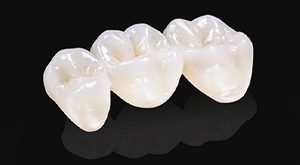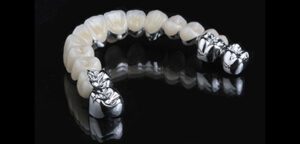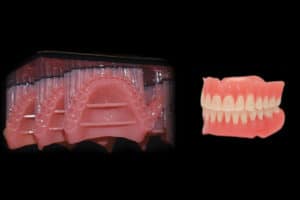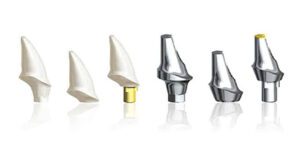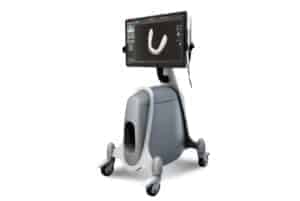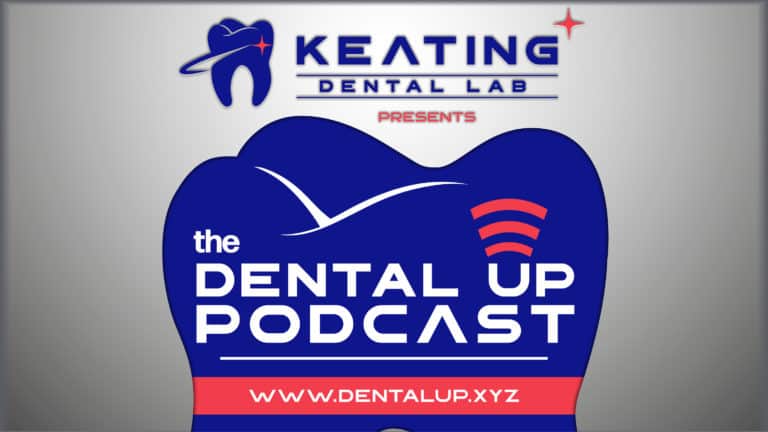“Deciding what products are best for your practice is not easy. In my practice, I didn’t want to guess when I made clinical decisions. Patients deserve more than that. That’s why I created REALITY 29 years ago. Now, I am more confident treating my patients. Let REALITY give you the unbiased information you need to select products that fit your practice.” Michael B. Miller, D.D.S
Podcast Transcription:
Dr. Hornbrook: Hello, I’m Dr. David Hornbrook, clinical director of Education and Technology at Keating Dental Lab in Irvine, California. Welcome to our weekly podcast on Dental Up. We’ve done some incredible podcasts, and I always say that, but we’re in for a special treat today with certainly what I’d consider one of my mentors, and that’s Dr. Michael Miller from Houston. Welcome, Michael.
Dr. Miller: Thanks, David.
Dr. Hornbrook: We’ve known each other a long time.
Dr. Miller: We have.
Dr. Hornbrook: Eighty-nine maybe, is that … I mean close to 28, 27 years, ever since …
Dr. Miller: A long time.
Dr. Hornbrook: Yeah, I’ve been in practice 27 years, and I met you not long after I got out of school. I’ll tell you, you’ve influenced the way I think, the way I practice, and my methodology on a daily basis, and I want to thank you personally for that.
Dr. Miller: I appreciate that.
Dr. Hornbrook: You graduated from dental school, and we were having this conversation earlier, that we all came out and we either decided we were going to specialty school or we’re going to just work at a family practice and be general dentists. You made a, it must have been a conscious decision, to explore materials, and evaluating materials, and helping fellow dentists work with better materials. Tell us a little bit about that journey.
Dr. Miller: When I got out of dental school, I went and did a dental practice residency, got out, went into practice. For about the first five years of my practice, this was back in the late 70s, early 80s, there wasn’t really that many materials out on the market. We were still in the very early stages of bonding, but I realized very early on that every time I went to the patient and wanted to treat a patient, did I really know what I was doing? Many times …
Dr. Hornbrook: You mean dental school didn’t teach you all those [crosstalk 00:01:42]?
Dr. Miller: No, dental school did not teach me, and to tell you the truth, I mean there were a few places you could go to find out about this in the early days, but it just wasn’t really concise. I just felt myself … I found myself just floundering. I felt like if I was floundering, there had to be a bunch of other docs out there, because we’re all in this together. I just decided that what dentistry really needed was a concise source where docs could go and find out about new materials, new devices, new products in general. That’s when in 1986 I started Reality. I had a partner early on. He decided that he preferred to do his practice, so from that point on we built up the company, and we opened up our own research lab in the 90s.
Ever since, we’ve been looking at products in a very unbiased, non-commercial manner. When a company sends products to us, they know that the minute we get it, it’s out of their control. That way, we stay independent. There’s no commercial influences. To this day we’re still looking at products and trying to inform dentists the best we can because the bottom line is that we dentists have to depend on manufacturers many times to tell us how to use the products, but manufacturers which we have found don’t always know how to use their products. One of the big things we’ve done over the years is really figure out how to best use a product and then put that information out [there 00:03:43].
Dr. Hornbrook: You mentioned Reality, and I should have done a little better introduction. Michael is the founder and co-editor now, or editor with your wife, Ingrid, of Reality and a monthly newsletter, Reality Now. A lot of it has gone on line of course, which is nice for us so we can go online and look at a product. In the early 90s, it was considered the Bible of aesthetic dentistry really. Gordon [Christiansen 00:04:06] had his stuff in CR, which was they were doing septic wipes and saliva ejectors, and you decided to get into look at cements, let’s look at resins, let’s look at from everything, brushing material. But you did things so cool in matching shades. If the manufacturer said it was an A2, was it an A2? Did it fluoresce? What we found from your book is if it says A2, it’s not always A2.
Dr. Miller: I first and foremost consider myself a clinical dentist. If what the information coming out was not useful to me, and you’re being on our editorial team and one of our evaluators, you know that when you fill out a survey that I’ve written that the questions are not typical questions. They’re very pointed towards clinical usage, because I mean at the end of the day, that’s what’s most important. Most of these products that have been out on the market for many years, they’re all FDA approved, they’re all safe to use, but the efficacy and the effectiveness when you’re treating a patient varies tremendously. That’s the information that we’ve tried to give to docs over the last almost 30 years now.
Dr. Hornbrook: Yeah, and also [in the intro 00:05:37], you said the manufacturers don’t always know how to use their products. They don’t know how to write instructions for their products. I’ve read some of the stuff in Reality, which basically it says, “Do not use it as the manufacturer says. Use it this way,” and it works.
Dr. Miller: The DFU’s directions for use for many products that are on the market are totally … You cannot understand them, and even if you could, they don’t really tell you specifically. Like for instance, if you’re using an adhesive and you need to keep the tooth moist, there needs to be specific calibrated [weight 00:06:17] to do that. But manufacturers talk about a couple seconds over there, or just let the tooth sit there for a few minutes, or whatever. I mean you can’t do that when you’re a clinical. Also, different restorations, different cavity preparations require slightly different treatments. It’s very difficult for the clinical dentist to try to decipher all that information.
Dr. Hornbrook: Oh yeah, and that’s your job.
Dr. Miller: That’s what we do [crosstalk 00:06:48]. That’s what we do.
Dr. Hornbrook: It’s interesting when you said manufacturers realize that once it goes into Reality’s hands, they can’t be calling the shots anymore. You’ve been to … You have a great relationship with manufacturers where … I’ve been to some of these where they say, “Look at our dentin bonding agent is best,” and they open a brand new package. Then they go up to some closet where the bottles are half empty and the tops aren’t on of these other manufacturers and they say, “Oh, see, isn’t ours better?” It’s like, “Wait a minute. That wasn’t fresh. You didn’t use it right.” Of course it’s going to be better.
I remember you telling me a story about someone we were just talking about, where he said his product is so easy to use, it works great, it’s head and shoulders above everyone else’s, and you guys couldn’t get the results. You called him and he said, “Oh, I better fly down there and show you how to use it.” Yeah, but he’s not going to fly out to every dentist’s office. We need people like you to simplify things for us.
Dr. Miller: Manufacturers have to be advocates for their products obviously, but we’re advocates for dentists and for patients, and that’s the bottom line. Because when a doc gets a product in and if the manufacturer has overblown the claims, it’s one thing if you’re buying toilet paper.
Dr. Hornbrook: Right, it’s the softest on the market.
Dr. Miller: If the toilet paper doesn’t work just right, you know that right off the bat, but in dentistry, when we’re placing restorations and the patients have all their trust in us in doing something right, and we have the trust in the product, we’re the ones that pay the price, not the manufacturer. Yes, I mean the manufacturer may, if they can trace it back to them, which is many times very difficult to do, but on the other hand, dentists also have to take part of the responsibility in terms of learning how to use products and using them properly.
Dr. Hornbrook: Yeah. Have you ever had any products throughout the years, the 30 years, where a company launched a product, and you tested it, and it was so bad that as you went back to the company they pulled the product or they said, “Oh, we’re going to make some radical changes?”
Dr. Miller: There’s been a number of products like that. There was a bonding agent that came out several years ago, and the manufacturer claimed that it would work for light cure, dual cure, and self-cure composites. We discovered very early on that it did not work with dual cure or self-cure composites. We reported on that, and I called the company. I said, “Well, you’re going to need to change it.” They came back to me and they said, “Well, we tested it in our lab, and it works.” When stuff like that happens, I reach out to other folks in the scientific community and I say, “Listen, what did you find? Because I want to make sure that what we found wasn’t our error.” Most times, we work very hard to get it right. This manufacturer, even with two different independent labs showing that it doesn’t work, they did not take the product off the market, so we publicized it and we told our Reality members, “Don’t buy the product.” There’s a number of instances like that.
Dr. Hornbrook: Yeah, that’s crazy. Let’s talk about some of the categories. I certainly suggest to our viewers and our listeners to go to Reality Esthetics, right?
Dr. Miller: Realityesthetics [crosstalk 00:10:38] dot com.
Dr. Hornbrook: With an A or an E?
Dr. Miller: Just with an E.
Dr. Hornbrook: OK, Realityesthetics, with an E, dot com, and become a member and look at the categories. Let’s talk about some of the categories that are still hot topics. They’re hot topics today like they were 10, even 15 years ago. Number one is bonding agents. You go from 4th and we … [You’re a 00:10:56], or at least you were, and I haven’t talked to you about that, we’ve been total etchers for years, and we always thought 4th was better than 5th, which was better than 6th, better than 7th, so talk a little bit about where you are right now. If I sat down in your chair and you were going to restore me, what would you be using?
Dr. Miller: I’ve never been real keen on this whole generation’s business because who really cares? But from a nomenclature standpoint, I think we all agree that if you can master what’s now called etch and rinse … It used to be called [turtle 00:11:32] etch. Now it’s changed to etch and rinse as opposed to a self-etcher, which you do not rinse. The etch and rinse adhesives of which OptiBond FL is probably the product that has stood the test of time, it’s a great product, still a 5 star in Reality because it works virtually across the board except if you’re trying to … If you want to use a resin cement and you use a metal substrate crown. It won’t work in those …
Dr. Hornbrook: But you can’t get light through it.
Dr. Miller: You can’t get light through it. Those products are still … I mean after all these years, OptiBond FL, I mean it was created in the early 90s. Think of that. I mean and it’s still a really good adhesive. But having said all that, I tend to use certainly for veneers or for Class 4s, even some Class 3s, especially if they’re very visible with a big facial extension, I still use an etch and rinse adhesive. It may not be so called 4th generation. It may be a 5th generation, since those are simpler, less [impermanence 00:12:53] and so on.
But when I’m doing posteriors, Class 1s and Class 2s and even some Class 5s, I tend to now use self-etchers because I have found over … In our tests, I mean we’ve tested virtually all the self-etchers on the market. We have found that as long as the enamel’s instrumented and certainly margins on Class 1s and Class 2s at least are always instrumented, so as long as you instrument the margin, most of the self-etchers on the market today will work just fine.
Dr. Hornbrook: OK, so you’re not even selecting etchant. You’re not selecting, just the enamel.
Dr. Miller: Rarely do I do the selective etch. The reason why … I mean I … Selective etch is nothing new [crosstalk 00:13:45] …
Dr. Hornbrook: We were taught in dental school …
Dr. Miller: I mean you go back to the era where you did not etch dentin, so you would put the … You would etch the enamel, and then you would hope that it’s going to stick to both, right? Selective etch is in vogue today with the so called universal adhesives, but to me, first of all, trying to keep etchant off of the dentin, it’s very difficult to do. It doesn’t matter what etchant you’re using. To think that a doc is going to spend all that time trying to get around all those margins just on the enamel, plus there’s an old study. We didn’t do it.
Somebody else did it, but an old study, it’s at least 25 years old, showing that when you rinse phosphoric acid off of a tooth, even if you don’t deliberately put it on dentin, when as soon as that phosphoric acid in the water, in your rinse water, goes across the dentin, it actually removes the smear layer that quickly. I think this whole selective etch, I think in Class 5s where you’re feathering out your coronal margin in Class 5s, that works nicely. But on any of the other restorations, on any of the other types of preps, it’s not even worth doing.
Dr. Hornbrook: OK, good. I think a lot of people are going to appreciate that because they’re doing that. They were probably sitting at the edge of their seats saying, “Oh, oh, he’s going to tell me I’m doing things wrong,” which is good. I’m going to switch topics a little bit because I still want to talk … I want to talk a little bit about curing lights. Before I do, your reputation is you always speak your mind. You never hold back. You tell people exactly what you feel, whether it’s in their … They want to hear it or not. I’ve always appreciated that from you. Then when I heard that you were going to be teaching at the dental school, I thought, “That’s not going to work.” You’re at UT Houston at the dental school, and it’s capacity … What’s your capacity there?
Dr. Miller: About a year and a half ago, I just decided that … I turned 65 and I said, “OK, well, I have maybe another 30 years in dentistry.”
Dr. Hornbrook: At least, at least.
Dr. Miller: Just like you have, I’ve practiced, I’ve done thousands of CE courses around the world, but I’ve never taught at the undergraduate level, or the pre-doc level. I said, “You know, I just …” I just felt like I needed to do that. I’m a clinical associate professor at the University of Texas School of Dentistry at Houston. It’s kind of a long name. I interact with the students on the clinic floor. I teach adhesion, I teach photography, I teach provisionals. My latest thing is that we’re on the verge of opening what we believe is the world’s first center for sports dentistry at the university.
Dr. Hornbrook: Oh, really?
Dr. Miller: The whole area of sports dentistry, and I know we don’t have time to get into the whole thing today, but it’s so fragmented, and today with concussions both for women, especially in soccer, and then football for boys, this was something that I felt … I used to be the dentist for the Houston Boxing Association in another life, and that, I enjoyed that. I did that for about ten years. Then my daughter, who is now 17, was on her school’s basketball team, and none of the girls were wearing mouth guards. When I got to the university I said, “Now’s the time to add some science to this.” Not saying that there’s not science out there about sports dentistry, but it’s nowhere near the level of sports medicine. That’s the latest in the [crosstalk 00:18:00].
Dr. Hornbrook: That’s exciting, because that’s something we didn’t learn about in dental school. I mean the only time you learn about sports dentistry is you go to some big dental meeting and there’s someone talking about mouth guards and showing all these poor athlete patients.
Dr. Miller: And it goes way beyond that.
Dr. Hornbrook: That’s interesting.
Dr. Miller: To tell you the truth, some of the mouth guards that are made for pro athletes are so elementary, and they’re really not even that protective. Our center, which is going to have a research component and a clinical component, will really try to bring it all together.
Dr. Hornbrook: My son’s football season, he’s a senior in high school and plays quarterback, it starts in two weeks, so give me some data because he’s already looking … He wants the one that looks cool that all his friends have. That’s exciting. What questions, these young dentists, I mean now they have another 60 years in front of them, what questions are they asking you? What’s something that repeats itself?
Dr. Miller: Working with the students at the dental school has really been really wonderful because they are so enthused about dentistry. A lot of dentists in practice today with a lot of the changes that have gone on, not … Many of them are not good changes, but the students are so enthusiastic, and they actually raise my spirit when I’m on there. They want to know, they still like cosmetic dentistry. That’s still sexy to them.
Dr. Hornbrook: Right. It is sexy.
Dr. Miller: It is sexy. I mean [crosstalk 00:19:38]. Yes, yes. Cosmetic dentistry is still sexy. Certainly with some of the economic changes, maybe it’s not as prominent today as it was five to ten years ago. Students still want to know that, and they still want to know … They really love the high tech stuff. Let’s face it, we’re all kind of techies. They like digital impressions.
Dr. Hornbrook: Are they teaching digital impressions in school?
Dr. Miller: We teach digital impressions. We have two different systems, and the students embrace those. They really enjoy composites. I mean they still like recreating what looks like a tooth. Very few amalgams being done.
Dr. Hornbrook: Even in school?
Dr. Miller: Even in our school. I mean I think in the year that I’ve been there and I’ve supervised students on the clinic floor, probably only a couple amalgams in all that time. All the rest of it are composites. They really respond to some of the advanced techniques, and polishing, and color, and hand sculpting, and different matricing systems. I mean just about everything. I think the things that dentists out in practice take for granted, these students as they’re learning, the best thing they’ll say to me is that, “Man, I learned so much during that segment,” and that’s really cool.
Dr. Hornbrook: It is cool, and their enthusiasm being exciting. I’m a guest faculty member at several universities, although I don’t do a clinic weekly or daily like you do, which I would love. I still get to interact with them, and it’s just … They grew up learning so much different than I did. If you asked me a question and I didn’t have the answer and I want to know the answer, I have to go to the library. I have to look through Encyclopedia Britannica. Now they just get on the Internet, and they’ll get on the Internet on their phone before I even can finish the answer.
I just think it’s so cool because they have access to so much knowledge and variety in their knowledge. I think it’s amazing how when I was in dental school, you see we had no pool. It was like Monday morning at 8:00 AM, Steve Adams took notes. Then he copied them for everyone else. Then at 9:00 PM was David Baker. Then we had to read, if we could read the writing. Now the slide comes up, and they take out their iPad and they just snap a picture of the PowerPoint or the PowerPoints go online.
Dr. Miller: Actually, the … In our school and many other schools, the entire lecture is accessible to them 24/7 because all of the lectures are videoed. They don’t even have to come to class if they don’t want to.
Dr. Hornbrook: Really? I would have been that kid. I’d be on the beach.
Dr. Miller: Let’s face it, I mean a lot of lectures are not that motivating, so they can watch them at home, in their apartments, or whatever. If they do come to class, which I still encourage students to come to class for the … To ask questions and to see the synergy that goes on, but if they want to check their notes, they can just pull up the lecture and fast forward and do all that. That’s a major change in dental education [crosstalk 00:23:24].
Dr. Hornbrook: Now some of the older instructors that have been there since you went there, are they struggling a little bit with sharing that way or do they embrace it as well?
Dr. Miller: Most of them are OK with that. In our school, we do have an opt out provision. If you don’t want to have your lecture taped or recorded, not taped, there’s no more tape, recorded, then you can opt out, but I would say virtually everyone allows that because it’s part of the education process today.
Dr. Hornbrook: Yeah, and there’s so much knowledge. I mean we used to say [crosstalk 00:24:00] it’s like taking a drink out of a fire hydrant. You’re not going to get it all, and we need to go back and review that.
Dr. Miller: Absolutely.
Dr. Hornbrook: All right, let’s get back to materials. Curing lights is something that we’ve had conversations in the past, and it goes up and down, and people still think they can cure for one second and some people think … With your expertise, what would be your answer? If I came to you as a student and I said, “You know, I picked up Dentistry Today and all these things, they say 5, or 10, or 15, or I should have this laser or this backlight,” what would be your recommendation?
Dr. Miller: Even with these so called high powered LEDs, the ones putting out 3000, 4000 milliwatts per square centimeter, the fact of the matter is that we’ve tested a number of those. We do it in a … Using real teeth, preparations and real teeth, and we test it with a computerized hardness device, so it’s not just scraping the composite with an explorer. You cannot test the curability of a composite or of a curing light just by scraping it. It’s impossible. You can’t do that, even though the manufacturers try to tell you you can do that. All of our tests, bottom line is that when you’re down deep doing a Class 2, even a deep Class 1, the vast majority of products on the market except some of the new bulk fills …
Some of the new bulk fills, you can cure them to a depth of perhaps 5 millimeters, but the curing lights themselves, you still have to cure each one of these increments. If you’re using a conventional composite or a flowable and you’re down, say, 6 to 7 millimeters into a cavity preparation, you still need to cure that first increment, most of the time for 40 seconds, way down deep, even if you’re using a high powered light. Now we’ve just tested a new flowable. This flowable actually cured adequately. When I say adequately, the conventional wisdom is that if the hardness of the surface, if you take that as 100%, then an adequate cure is 80% down deep. This composite actually cured to like 85% in 20 seconds.
Some of the newer composites that are more light curable, but you don’t necessarily know that right out [of the box 00:26:44], so my usual advice to the students or to any doc out there is that when it’s down deep in the cavity preparation, your first layer should be 40 seconds. Now you do need to pay attention if you have one of these really high powered lights, 3000 milliwatts, you have to watch out for heat. What I tell docs to do is that if you’re using one of those lights, which are not my favorite by the way because the diameter of the tips are typically very small, maybe 7 millimeters, which means that you have to overlap your cures.
You’d be better off getting a larger tip and just curing longer, and you know that you’re overlapping the restoration. That’s really … Even though curing lights have improved, when you’re dealing with deep restorations and especially if you think you’re curing like a dual cure core material, a lot of docs, it’s not unusual to be 10 millimeters away from the base of that preparation, especially if you’re going down into a pulp chamber after endo. These dual cure core materials, many times your light definitely is not going to go down there. That means that how long does it take for them to really get hard enough so that you could prep it? Our tests have shown that the vast majority of them require five to six minutes of curing.
Dr. Hornbrook: That’s forever in today’s dentistry.
Dr. Miller: That is forever.
Dr. Hornbrook: We just talked about that with [someone else 00:28:31].
Dr. Miller: I’m not a big fan of that. If I’m building up a tooth like that, I’m going to use a deep curing light cured material, and I’m going to put in two layers. I know that that’s going to be thoroughly cured and then I can move on, because I don’t like waiting that long as much as anyone else.
Dr. Hornbrook: Yeah, you’ve got the same ADD problem I have.
Dr. Miller: Exactly. Now one, the only place that works nicely is if you’re doing multiple teeth, because then you go squirt, squirt, squirt, squirt, and then everything by the time you would cure them all, you might as well just let them self-cure.
Dr. Hornbrook: Right, that’ll be your five or six minutes. OK. It’s about 25 minutes. We try to keep these around 30, but we’ve got so much we can talk about I want to give you … A half hour goes by so fast. It’s absolutely crazy.
Dr. Miller: It goes fast.
Dr. Hornbrook: Five years from now, you just handed me the new Reality book. I open it up. What do you think I’m going to see in there that I’m going to be excited about or that’s going to be different than my 2015 Reality book? What would you envision?
Dr. Miller: I think, first of all, maybe not in five years but in ten years, I think regular impression materials are going to be a thing of the past. We’re going to be able to take digital impressions through, not if there’s just a Niagara Falls of blood coming out of the sulcus, but we’re going to be able to see through gingival tissue. I mean forget … I know you’re not a big fan of retraction cord. I’m still old hat.
Dr. Hornbrook: That’s OK. The important thing is to capture the margins after working Keating. I don’t care how you do it, capture the margins.
Dr. Miller: I still … I like cord just because I like to prep with cord in, even if I’m just going slightly, because I’m a real believer that we should not go hardly at all subgingival.
Dr. Hornbrook: Yeah, I would agree with you on that.
Dr. Miller: I try to keep my margins equigingival. But if it’s right up here with a patient with a high smile line, a high lip line, I mean I’m probably going to cheat a little bit just to be on the safe side. I like using cord because … In the old days, I took a course by one of the old masters, Dr. Charles [Pinkus 00:30:58]. You may remember Charlie Pinkus. He taught me that once it bleeds, then you get scar tissue, and scar tissue never looks like virgin tissue, so you go beyond. You do whatever you can to keep that tissue from bleeding. Before I go subgingival, I put in a cord. But in any event, but I believe that digital impressions is going to be … They’re coming on now, but the prices are going to be much lower. You’re probably going to be able to buy a digital impressioning system for probably a thousand bucks. That’s going to be a … Now I don’t think, I still don’t think many docs are going to be designing their own crowns.
Dr. Hornbrook: Yeah, I would agree with you on that.
Dr. Miller: I think this is all going to be done through labs, labs and you with Keating I’m sure you’re doing a lot of that right now, but you’re going to be taking an impression and maybe even through some kind of … We’re using WiFi today, but in ten years it’s going to be totally different, whatever …
Dr. Hornbrook: Yeah, the rules are all going to change.
Dr. Miller: In real time they’re going to go to the lab, and I bet the lab is going to come back and say to the doc, “You need to do this, this, and this in real time.” The doc is probably going to have some kind of listening …
Dr. Hornbrook: Earpiece or something.
Dr. Miller: Earpiece or whatever. Somebody sitting at the lab, it could be thousands of miles away, is going to say, “Yeah, that’s not too bad but you need to do this, this, and this.” I think that is definitely going to be there, and it’s going to be great because with Keating I’m sure you see under-preps, teeth that are under-prepped, don’t have adequate clearance.
Dr. Hornbrook: Every day.
Dr. Miller: I think all those things are going to go away. That makes me excited.
Dr. Hornbrook: Yeah, and it could be that maybe it’s we’re not on headphones. We scan it, and the computer says, “You’re under-prepped in this marginal ridge.” When it makes the recommendation right, because the technology is there obviously.
Dr. Miller: Yes. Quite possibly it’s … Whether it’s talking to somebody at the lab or the computer’s going to analyze it right there. You’re right. I mean it could be that way. A lot of those issues are going to go, and they have to because the way that dentistry is going, we’ve got to keep costs down because patients just with all the Affordable Care Act stuff and everything like that, I mean medicine has already been hit really hard. We’re waiting for it.
Dr. Hornbrook: I know.
Dr. Miller: I think that excites me. I’m doing some research at the dental school right now on silver diamine fluoride and of actually, and this is not necessarily brand new, but it’s going to be much bigger in the future in the way of public health where you put on a material such as that, where you just take out the top layer of what I call smooshy caries, but you leave everything else. That’s going to cut down tremendously on endodontic procedures.
Dr. Hornbrook: OK. It remineralizes it?
Dr. Miller: It kills the bugs. I mean it’s a very potent antimicrobial. Then you then put in a so called smart material, one that the buzz term today is bioactive.
Dr. Hornbrook: Bioactive, yeah.
Dr. Miller: But bioactive, I mean everybody is saying how bioactive is something new. Bioactive’s been around for a long time. I mean the first bioactive material was glass ionomer, and that’s still around, so that, doing even minimally invasive dentistry. I mean everybody thinks that’s new. That’s been around for many years, and preserving the enamel. I always say to docs when I lecture, “You own the schmootz. The patient owns the enamel, so preserve as much of the enamel.” Because it doesn’t matter what we do, the ceramics and composites, it’s still not as good as enamel.
Dr. Hornbrook: Yeah, I absolutely agree. Good. Good. I hope you enjoyed it. I had a good time. It’s always good to spend time with you.
Dr. Miller: It was great.
Dr. Hornbrook: I hope you enjoyed it as much as I did, certainly. As you can see, Michael’s a wealth of information and why I call him one of my mentors. For other podcasts visit us at www.Dentalup, that’s all one word, Dentalup.XYZ. See some of the cool things we’re doing with courses, with our videos, our whiteboard teaching. We’re having a really good time. Michael, we already gave them the information, Realityesthetics.com. Is there a website for your lecture schedule if they said, “I want to go see him and spend a day with him”? Is there … How would they do that?
Dr. Miller: Just [email protected]. Just email me, and I’d be happy to discuss the lectures sequence.
Dr. Hornbrook: Good. What’s your title of your lecture today? I mean when you do your [crosstalk 00:36:19] …
Dr. Miller: Actually, it’s interesting because my lectures used to be Taking the Mystery out of Dental Esthetics or Taking the Mystery out of Dental Materials, but now I have like eight different lectures, modular form. I do a technique lecture. It’s probably not as good as yours, but I do a technique lecture.
Dr. Hornbrook: I really doubt that.
Dr. Miller: I do a lecture on sports dentistry. I do a lecture on provisionals. I do a lecture on just adhesives in general. I have a different module. CE sponsors can pick and choose the ones that best fit their needs.
Dr. Hornbrook: Yeah, good. I remember when a few years ago, I don’t know, it was four or five years ago, I was lecturing down in Australia. I think it was Melbourne. I walked in the lobby bar and there you were. You said, “I’m lecturing.” I said, “No, I’m lecturing.” It was two different groups in the same hotel.
Dr. Miller: Yep. Yeah.
Dr. Hornbrook: I hope I get to see you lecture soon. I hope you enjoyed it. If you’re ever in the southern California area, Keating Dental Lab, we’re about five miles from Newport Beach, five miles from Disneyland. Give us a call ahead of time. We’d love to show you around. Hope to see you soon.

